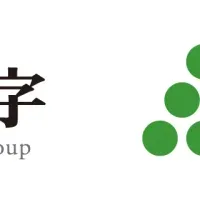
Collaboration Between SandboxAQ and iOncologi Aims to Innovate Glioblastoma Treatment Through AI Technology
Innovative Partnership to Combat Glioblastoma
In a significant advancement in cancer treatment, SandboxAQ and iOncologi have announced a strategic collaboration aimed at developing and commercializing a groundbreaking high-fidelity mRNA vaccine specifically targeting glioblastoma, one of the most aggressive types of brain cancer. This partnership stands to transform the landscape of treatment options available to patients suffering from this devastating ailment.
Glioblastoma, characterized by its rapid progression and harsh prognosis, strikes down approximately 300,000 individuals yearly, leading to around 200,000 deaths globally, highlighting the pressing need for effective treatment strategies. This new collaboration endeavors to address that need by integrating SandboxAQ's advanced software technology with iOncologi's expertise in immunotherapy.
CEO of SandboxAQ, Jack Hidary, highlighted the urgency of tackling glioblastoma while unveiling their shared goal to deliver a therapeutic candidate to clinical testing within the next 18 months. “Our collaboration with iOncologi aims to create a new and effective treatment for this challenging condition,” stated Hidary, emphasizing the potential of combining comprehensive oncology data with cutting-edge quantitative AI tools.
The collaboration will leverage SandboxAQ's AQBioSim platform alongside iOncologi's immunotherapy development skills. This unique intersection of technology and clinical proficiency is designed to accelerate the discovery process, transitioning from theoretical models to real-world applications. iOncologi specializes in the design of precision immunotherapies that aim to reprogram the immune system to combat tumors, particularly those that have traditionally posed treatment challenges due to the blood-brain barrier.
Dr. Edgardo Rodriguez-Lebron, CEO of iOncologi, emphasized the innovative nature of their approach, stating, “By integrating immune intelligence, mRNA engineering, and drug delivery platforms, we are creating adaptable patient-specific treatment models.” This forward-thinking strategy aims not only to tackle glioblastoma but also to set a precedent for treating other solid tumors that have eluded effective therapies for years.
One of the most compelling aspects of this collaboration is SandboxAQ's utilization of large-scale quantitative models (LQMs). These models enable researchers to rapidly identify drug candidates and simulate their molecular behavior, thereby expediting the entire process of drug discovery and design. The technological advancements represented by AQBioSim are positioning SandboxAQ ahead of traditional methods, showcasing the capability to generate new molecules with efficiency that outpaces existing technologies by significant margins.
Nadia Harhen, the General Manager of AI Simulation and head of AQBioSim division, elaborated on this by stating, “Our technology stack, when adapted to oncology, has the potential to make a substantial impact where historical approaches have frequently failed.” The platform's efficiency – achieving results 100 times faster and at a fraction of the cost when compared to large-scale virtual screenings – is a game-changer in the quest for effective cancer therapies.
Moreover, this alliance mirrors SandboxAQ's previous partnerships, including their collaboration with Stand Up To Cancer® (SU2C) to further cancer research. By harnessing the power of LQMs, this initiative aims to accelerate the development of treatments that address hard-to-diagnose cancers and optimize responses to therapy.
This revolutionary partnership between SandboxAQ and iOncologi is set against a backdrop of an urgent need for innovative treatment solutions for glioblastoma patients. The aggressive nature of the disease, combined with limited existing therapies, highlights the crucial interplay of technology and medicine in the fight against one of humanity's most pressing health challenges. With expectations set for significant advancements in the coming months, the medical community watches closely to see how this partnership unfolds in its promise to offer hope to those affected by glioblastoma.
Topics Health)










【About Using Articles】
You can freely use the title and article content by linking to the page where the article is posted.
※ Images cannot be used.
【About Links】
Links are free to use.